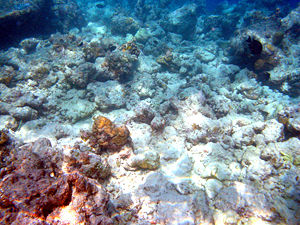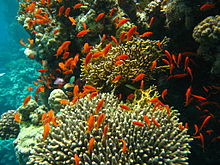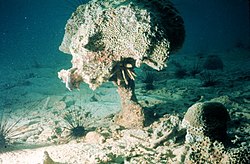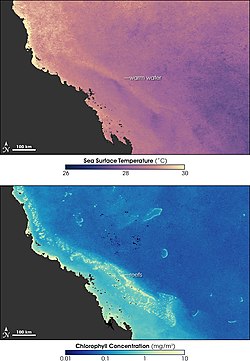At first glance, sustainability and mineral resource development appear to be in conflict. Mining depletes finite resources and in a strict sense, therefore, is inherently unsustainable. For instance, there is only a finite amount of copper in the earth’s crust, and each unit of copper extracted increases the fraction of the total copper resource base that is in use. Thus, it can be argued that if we continue to mine we will eventually exhaust the available supply of minerals.
This perspective, however, ignores the dynamics of mineral supplies. In practice the non-renewable character of minerals may be less constraining than it might seem. Five factors make the benefits from mining much more sustainable than they initially appear to be. First, through the process of exploration and development, mining companies continually reinvigorate, augment, or “sustain” their reserves.2 Current reserves represent only a small portion of the mineral resources remaining in the earth’s crust. Exploration and development lead to the discovery and proving up of previously unknown mineral deposits and—perhaps just as important—additional reserves at existing mines and known deposits. Technological improvements in exploration increase the discovery rate of mineral deposits and at the same time reduce discovery costs. Predictive models for massive sulfide deposits, for example, allow targeting of completely buried deposits by using the combination of structuralDeforestation
is the clearance of naturally occurring forests by logging and burning.
Deforestation occurs for many reasons: trees or derived charcoal are used as, or sold, for fuel or as a commodity, while cleared land is used as pasture for livestock, plantations of commodities, and settlements. The removal of trees without sufficient reforestation has resulted in damage to habitat, biodiversity loss and aridity. It has adverse impacts on biosequestration of atmospheric carbon dioxide. Deforested regions typically incur significant adverse soil erosion and frequently degrade into wasteland.Disregard or ignorance of intrinsic value, lack of ascribed value, lax forest management and deficient environmental law are some of the factors that allow deforestation to occur on a large scale. In many countries, deforestation is an ongoing issue that is causing extinction, changes to climatic conditions, desertification, and displacement of indigenous people.
Among countries with a per capita GDP of at least US$4,600, net deforestation rates have ceased to increase

Causes of deforestation
There are many root causes of contemporary deforestation, including corruption of government institutions, the inequitable distribution of wealth and power,population growth and overpopulation and urbanization. Globalization is often viewed as another root cause of deforestation,though there are cases in which the impacts of verbalization (new flows of labor, capital, commodities, and ideas) have promoted localized forest recovery.In 2000 the United Nations Food and Agriculture Organization (FAO) found that "the role of population dynamics in a local setting may vary from decisive to negligible," and that deforestation can result from "a combination of population pressure and stagnating economic, social and technological conditions."
According to the United Nations Framework Convention on Climate Change (UNFCCC) secretariat, the overwhelming direct cause of deforestation is agriculture. Subsistence farming is responsible for 48% of deforestation; commercial agriculture is responsible for 32% of deforestation; logging is responsible for 14% of deforestation and fuel wood removals make up 5% of deforestation.
The degradation of forest ecosystems has also been traced to economic incentives that make forest conversion appear more profitable than forest conservation. Many important forest functions have no markets, and hence, no economic value that is readily apparent to the forests' owners or the communities that rely on forests for their well-being From the perspective of the developing world, the benefits of forest as carbon sinks or biodiversity reserves go primarily to richer developed nations and there is insufficient compensation for these services. Developing countries feel that some countries in the developed world, such as the United States of America, cut down their forests centuries ago and benefited greatly from this deforestation, and that it is hypocritical to deny developing countries the same opportunities: that the poor shouldn't have to bear the cost of preservation when the rich created the problem
Experts do not agree on whether industrial logging is an important contributor to global deforestation. Similarly, there is no consensus on whether poverty is important in deforestation. Some argue that poor people are more likely to clear forest because they have no alternatives, others that the poor lack the ability to pay for the materials and labour needed to clear forest. Claims that population growth drives deforestation have been disputed; one study found that population increases due to high fertility rates were a primary driver of tropical deforestation in only 8% of cases.
Some commentators have noted a shift in the drivers of deforestation over the past 30 yearsWhereas deforestation was primarily driven by subsistence activities and government-sponsored development projects like transmigration in countries like Indonesia and colonization in Latin America, India, Java etc during late 19th century and the earlier half of the 20th century. By the 1990s the majority of deforestation was caused by industrial factors, including extractive industries, large-scale cattle ranching, and extensive agriculture.[20]
Environmental problems
Atmospheric
Deforestation is ongoing and is shaping climate and geography.Deforestation is a contributor to global warming,and is often cited as one of the major causes of the enhanced greenhouse effect. Tropical deforestation is responsible for approximately 20% of world greenhouse gas emissions.According to the Intergovernmental Panel on Climate Change deforestation, mainly in tropical areas, could account for up to one-third of total anthropogenic carbon dioxide emissions.But recent calculations suggest that carbon dioxide emissions from deforestation and forest degradation (excluding peatland emissions) contribute about 12% of total anthropogenic carbon dioxide emissions with a range from 6 to 17%. Trees and other plants remove carbon (in the form of carbon dioxide) from the atmosphere during the process of photosynthesis and release oxygen back into the atmosphere during normal respiration. Only when actively growing can a tree or forest remove carbon over an annual or longer timeframe. Both the decay and burning of wood releases much of this stored carbon back to the atmosphere. In order for forests to take up carbon, the wood must be harvested and turned into long-lived products and trees must be re-planted. Deforestation may cause carbon stores held in soil to be released. Forests are stores of carbon and can be either sinks or sources depending upon environmental circumstances. Mature forests alternate between being net sinks and net sources of carbon dioxide (see carbon dioxide sink and carbon cycle).
Reducing emissions from the tropical deforestation and forest degradation (REDD) in developing countries has emerged as new potential to complement ongoing climate policies. The idea consists in providing financial compensations for the reduction of greenhouse gas (GHG) emissions from deforestation and forest degradation".
Rainforests are widely believed by laymen to contribute a significant amount of world's oxygen, although it is now accepted by scientists that rainforests contribute little net oxygen to the atmosphere and deforestation will have no effect on atmospheric oxygen levelsHowever, the incineration and burning of forest plants to clear land releases large amounts of CO2, which contributes to global warming.
Forests are also able to extract carbon dioxide and pollutants from the air, thus contributing to biosphere stability.
Hydrological
The water cycle is also affected by deforestation. Trees extract groundwater through their roots and release it into the atmosphere. When part of a forest is removed, the trees no longer evaporate away this water, resulting in a much drier climate. Deforestation reduces the content of water in the soil and groundwater as well as atmospheric moisture.Deforestation reduces soil cohesion, so that erosion, flooding and landslides ensue. Forests enhance the recharge of aquifers in some locales, however, forests are a major source of aquifer depletion on most locales.Shrinking forest cover lessens the landscape's capacity to intercept, retain and transpire precipitation. Instead of trapping precipitation, which then percolates to groundwater systems, deforested areas become sources of surface water runoff, which moves much faster than subsurface flows. That quicker transport of surface water can translate into flash flooding and more localized floods than would occur with the forest cover. Deforestation also contributes to decreased evapotranspiration, which lessens atmospheric moisture which in some cases affects precipitation levels down wind from the deforested area, as water is not recycled to downwind forests, but is lost in runoff and returns directly to the oceans. According to one preliminary study, in deforested north and northwest China, the average annual precipitation decreased by one third between the 1950s and the 1980s.[citation needed]
Trees, and plants in general, affect the water cycle significantly:
- their canopies intercept a proportion of precipitation, which is then evaporated back to the atmosphere (canopy interception);
- their litter, stems and trunks slow down surface runoff;
- their roots create macropores - large conduits - in the soil that increase infiltration of water;
- they contribute to terrestrial evaporation and reduce soil moisture via transpiration;
- their litter and other organic residue change soil properties that affect the capacity of soil to store water.
- their leaves control the humidity of the atmosphere by transpiring. 99% of the water absorbed by the roots moves up to the leaves and is transpired.
The forest may have little impact on flooding in the case of large rainfall events, which overwhelm the storage capacity of forest soil if the soils are at or close to saturation.
Tropical rainforests produce about 30% of our planet's fresh water.
Soil
China's Loess Plateau was cleared of forest millennia ago. Since then it has been eroding, creating dramatic incised valleys, and providing the sediment that gives the Yellow River its yellow color and that causes the flooding of the river in the lower reaches (hence the river's nickname 'China's sorrow').
Removal of trees does not always increase erosion rates. In certain regions of southwest US, shrubs and trees have been encroaching on grassland. The trees themselves enhance the loss of grass between tree canopies. The bare intercanopy areas become highly erodible. The US Forest Service, in Bandelier National Monument for example, is studying how to restore the former ecosystem, and reduce erosion, by removing the trees.
Tree roots bind soil together, and if the soil is sufficiently shallow they act to keep the soil in place by also binding with underlying bedrock. Tree removal on steep slopes with shallow soil thus increases the risk of landslides, which can threaten people living nearby. However most deforestation only affects the trunks of trees, allowing for the roots to stay rooted, negating the landslide.
Ecological
Deforestation results in declines in biodiversity.The removal or destruction of areas of forest cover has resulted in a degraded environment with reduced biodiversity. Forests support biodiversity, providing habitat for wildlife; moreover, forests foster medicinal conservation. With forest biotopes being irreplaceable source of new drugs (such as taxol), deforestation can destroy genetic variations (such as crop resistance) irretrievably.Since the tropical rainforests are the most diverse ecosystems on Earthand about 80% of the world's known biodiversity could be found in tropical rainforests,removal or destruction of significant areas of forest cover has resulted in a degradedenvironment with reduced biodiversity.
Scientific understanding of the process of extinction is insufficient to accurately make predictions about the impact of deforestation on biodiversity.Most predictions of forestry related biodiversity loss are based on species-area models, with an underlying assumption that as forest are declines species diversity will decline similarly.However, many such models have been proven to be wrong and loss of habitat does not necessarily lead to large scale loss of species.Species-area models are known to overpredict the number of species known to be threatened in areas where actual deforestation is ongoing, and greatly overpredict the number of threatened species that are widespread.
It has been estimated that we are losing 137 plant, animal and insect species every single day due to rainforest deforestation, which equates to 50,000 species a year. Others state that tropical rainforest deforestation is contributing to the ongoing Holocene mass extinction.[ The known extinction rates from deforestation rates are very low, approximately 1 species per year from mammals and birds which extrapolates to approximately 23,000 species per year for all species. Predictions have been made that more than 40% of the animal and plant species in Southeast Asia could be wiped out in the 21st century.Such predictions were called into question by 1995 data that show that within regions of Southeast Asia much of the original forest has been converted to monospecific plantations, but that potentially endangered species are few and tree flora remains widespread and stable.
Economic impact
Damage to forests and other aspects of nature could halve living standards for the world's poor and reduce global GDP by about 7% by 2050, a major report concluded at the Convention on Biological Diversity (CBD) meeting in Bonn. Historically utilization of forest products, including timber and fuel wood, have played a key role in human societies, comparable to the roles of water and cultivable land. Today, developed countries continue to utilize timber for building houses, and wood pulp for paper. In developing countries almost three billion people rely on wood for heating and cooking.The forest products industry is a large part of the economy in both developed and developing countries. Short-term economic gains made by conversion of forest to agriculture, or over-exploitation of wood products, typically leads to loss of long-term income and long term biological productivity (hence reduction in nature's services). West Africa, Madagascar, Southeast Asia and many other regions have experienced lower revenue because of declining timber harvests. Illegal logging causes billions of dollars of losses to national economies annually.
The new procedures to get amounts of wood are causing more harm to the economy and overpowers the amount of money spent by people employed in logging;. According to a study, "in most areas studied, the various ventures that prompted deforestation rarely generated more than US$5 for every ton of carbon they released and frequently returned far less than US$1". The price on the European market for an offset tied to a one-ton reduction in carbon is 23 euro (about US$35).
http://en.wikipedia.org/wiki/Deforestation
Coral bleaching
From Wikipedia, the free encyclopedia
Coral bleaching is the whitening of corals, due to stress-induced expulsion or death of symbiotic, algae-like protozoa, or due to the loss of pigmentation within the protozoa.[1] The corals that form the structure of the great reef ecosystems of tropical seas depend upon a symbiotic relationship with unicellular flagellate protozoa, called zooxanthellae, that are photosynthetic and live within their tissues. Zooxanthellae give coral its coloration, with the specific color depending on the particular clade. Under stress, corals may expel their zooxanthellae, which leads to a lighter or completely white appearance, hence the term "bleached".[2]Once bleaching begins, it tends to continue even without continuing stress. If the coral colony survives the stress period, zooxanthellae often require weeks to months to return to normal density.[3] The new residents may be of a different species. Some species of zooxanthellae and corals are more resistant to stress than other species.
Causes of coral bleaching
Coral bleaching is a vivid sign of corals responding to stress, which can be induced by any of:- increased (most commonly), or reduced water temperatures[4][5]
- increased solar irradiance (photosynthetically active radiation and ultraviolet band light)
- changes in water chemistry (in particular acidification)
- starvation caused by a decline in zooplankton[9]
- increased sedimentation (due to silt runoff)
- pathogen infections
- changes in salinity
- wind[5]
- low tide air exposure[5]
Temperature change
Temperature change is the most common cause of coral bleaching.Large coral colonies such as Porites are able to withstand extreme temperature shocks, while fragile branching corals such as table coral are far more susceptible to stress following a temperature change. Corals consistently exposed to low stress levels may be more resistant to bleaching.
Factors that influence the outcome of a bleaching event include stress-resistance which reduces bleaching, tolerance to the absence of zooxanthellae, and how quickly new coral grows to replace the dead. Due to the patchy nature of bleaching, local climatic conditions such as shade or a stream of cooler water can reduce bleaching incidence. Coral and zooxanthellae health and genetics also influence bleaching.
Monitoring reef sea surface temperature
The US National Oceanic and Atmospheric Administration (NOAA) monitors for bleaching "hot spots", areas where sea surface temperature rises 1 degree Celsius or more above the long-term monthly average. This system detected the worldwide 1998 bleaching event,that corresponded to an El Niño. NOAA also uses a satellite with 50k resolution at night, which some argue covers too large a spatial area and does not detect the maximum sea surface temperatures occurring usually around noon.[citation needed]Changes in ocean chemistry
Increasing ocean acidification likely exacerbates the bleaching effects of thermal stress.Infectious disease
It was discovered in 1996 that the bleaching agent of Oculina patagonica in the Mediterranean Sea was infectious bacteria attacking the zooxanthellae. The bacteria were later identified as Vibrio shiloi V. shiloi is infectious only during warm periods. Elevated temperature increases the virulence of V. shiloi, which then become able to adhere to a beta-galactoside-containing receptor in the surface mucus of the host coral. V. shiloi then penetrates the coral's epidermis, multiplies, and produces both heat-stable and heat-sensitive toxins, which affect zooxanthellae by inhibiting photosynthesis and causing lysis.During the summer of 2003, coral reefs in the Mediterranean Sea appeared to gain resistance to the pathogen, and further infection was not observedThe main hypothesis for the emerged resistance is the presence of symbiotic communities of protective bacteria living in the corals. The bacterial species capable of lysing V. shiloi has not been identified.
Impact
In the 2010-2040 period, coral reefs are expected to become highly susceptible to more frequent bleaching events. The IPCC sees this as the greatest threat to the world's reef systems.reat Barrier Reef
The IPCC's moderate warming scenarios (B1 to A1T, 2°C by 2100, IPCC, 2007, Table SPM.3, p. 13) forecast that corals on the Great Barrier Reef are very likely to regularly experience summer temperatures high enough to induce bleaching.
Other areas
Other coral reef provinces have been permanently damaged by warm sea temperatures, most severely in the Indian Ocean. Up to 90% of coral cover has been lost in the Maldives, Sri Lanka, Kenya and Tanzania and in the Seychelles.Evidence from extensive research in the 1970’s of thermal tolerance in Hawaiian corals and of oceanic warming led researchers in 1990 to predict mass occurrences of coral bleaching throughout Hawaii. Major bleaching occurred in 1996 and in 2002.
Coral in the south Red Sea does not bleach despite summer water temperatures up to 34°C.
Significant bleaching occurred in the Mediterranean Sea in 1996.
http://en.wikipedia.org/wiki/Coral_bleaching
Mangrove
From Wikipedia, the free encyclopedia
Mangroves are trees and shrubs that grow in saline coastal habitats in the tropics and subtropics – mainly between latitudes 25° N and 25° S. The saline conditions tolerated by various species range from brackish water, through pure seawater (30 to 40 ppt), to water of over twice the salinity of ocean seawater, where the salt has become concentrated by evaporation (up to 90 ppt).There are many species of trees and shrubs adapted to saline conditions. Not all are closely related, and the term "mangrove" may be used for all of them, or more narrowly only for the mangrove family of plants, the Rhizophoraceae, or even more specifically just for mangrove trees of the genus Rhizophora.
Mangroves form a characteristic saline woodland or shrubland habitat, called mangrove swamp, mangrove forest, mangrove or mangal.Mangals are found in depositional coastal environments where fine sediments (often with high organic content) collect in areas protected from high energy wave action. They occur both in estuaries and along open coastlines. Mangroves dominate three quarters of tropical coastlines
Geographical regions
Mangroves occur in numerous areas worldwide. See List of mangrove ecoregions.Africa
Nigeria has Africa's largest mangrove concentration, spanning 36,000 km2. Oil spills and leaks have destroyed many in the last fifty years, damaging the local fishing economy and water quality.
Along the coast of the Red Sea both on the Egyptian side and in the Gulf of Aqaba, mangroves composed primarily of Avicennia marina and Rhyzophora mucronata in about 28 stands cover about 525 hectares. Almost all Egyption mangrove stands are now protected.
Americas
Mangroves live in many parts of the tropical and subtropical coastal zones of North, South and Central America.Continental United States
Because of their sensitivity to sub-freezing temperatures, mangroves in the continental United States are limited to the Florida peninsula (see Florida mangroves) and isolated growths of Black Mangrove (Avicennia germinans) along the coast of southern Louisianaand south TexasCentral America & Caribbean
Mangroves occur on the west coast of Costa Rica, on the Pacific and Caribbean coasts of Nicaragua, Belize, Guatemala, Honduras, and Panama and on many Caribbean Islands, such as Curacao, Bonaire, Antigua, the Bahamas, Saint Kitts and Nevis and St. Lucia. Significant mangals include the Marismas Nacionales-San Blas mangroves in Mexico. Mangroves can also be found in Puerto Rico, Cuba, the Dominican Republic, Haiti, Jamaica, Trinidad, Barbados, and the Pacific coast of El Salvador.South America
Brazil contains approximately 26,000 km2 of mangals, 15% of the world's total of 172,000 km2.Ecuador and Peru have significant areas of mangroves mainly in the Gulf of Guayaquil-Tumbes mangroves.
Venezuela's northern Caribbean island, Margarita, possesses mangrove forests in the Parque Nacional la Restinga.
Colombia possesses large mangrove forests on both its Caribbean and Pacific coasts.
Asia
Indomalaya ecozone
Mangroves occur on Asia's south coast, throughout the Indian subcontinent, in all southeast Asian countries, and on islands in the Indian Ocean, Arabian Sea, Bay of Bengal, South China Sea and the Pacific.The mangal is particularly prevalent in the deltas of large Asian rivers. The Sundarbans is the largest mangrove forest in the world, located in the Ganges delta in Bangladesh and West Bengal, India.
The Pichavaram Mangrove Forest near Chidambaram, South India, by the Bay of Bengal is the world's second largest mangrove forest. Notably, it has actually increased by 90% in size between 1986 and 2002.[citation needed]
Major mangals live on the Andaman and Nicobar Islands and the Gulf of Kutch in Gujarat.[18]
Other significant mangals include the Bhitarkanika Mangroves and Godavari-Krishna mangroves.
The mangal in the Ganges-Surma-Meghna River System delta was one of the largest in the world.[citation needed]
In Vietnam, mangrove forests grow along the southern coast, including two forests: the Can Gio Mangrove Forest biosphere reserve and the U Minh mangrove forest in the Sea and Coastal Region of Kien Giang, Ca Mau and Bac Lieu province.
The mangrove forests of Kompong Sammaki in Cambodia are of major ecological and cultural importance, as the human population relies heavily on the crabs and fish that live in the roots.
The three most important mangrove forests of Taiwan are: Tamsui River in Taipei, Jhonggang River in Miaoli and the Sihcao Wetlands in Tainan. According to research, there are four existing types of mangrove in Taiwan.[citation needed] Some places have been developed as scenic areas, such as the log raft routes in Sihcao.
In the Indonesian Archipelago, mangroves occur around much of Sumatra, Borneo, Sulawesi and the surrounding islands. While further north they found along the coast of the Malay Peninsula.
[edit] Pakistan
Pakistani mangroves are located mainly on the Indus delta. Major mangrove forests are also found on the coastal line of provinces Sindh and Balochistan.In Pakistan, the mangrove forest are located on the coasts of Sindh and Balochistan provinces. Pakistan's mangrove ecosystem is one of the largest found in an arid climate. Without realising their global significance, the local communities continue to use mangroves as fuelwood and fodder. In urban areas, mangroves are being cut away for developmental activities on the coast. Pakistan project include rehabilitation of mangrove-degraded areas at Sonmiani and Jiwani in Balochistan, and Sandspit in Karachi, Sindh. In Karachi, land reclamation projects are cutting down mangrove forests and filling then earth and selling them for commercial and urban development.
Middle East
Oman, near Muscat, supports large areas of mangroves, in particular at Shinas, Qurm Park and Mahout Island. In Arabic, mangrove trees are known as qurm, thus the mangrove area in Oman is known as Qurm Park. Mangroves are also present extensively in neighboring Yemen.[19]Iranian mangrove forests occur between 25°11′N to 27°52′N. These forests exist in the north part of the Persian Gulf and Oman Sea, along three Maritime Provinces in the south of Iran. These provinces respectively from southwest to southeast of Iran, include Bushehr, Hormozgan and Sistan & Balouchestan.
Australasia
More than fifty species of Rhizophoraceae grow in Australasia[20] with particularly high biodiversity on the island of New Guinea and northern Australia.[20]Australia has approximately 11,500 km2 of mangroves primarily on the northern and eastern coasts of the continent, with occurrences as far south as Millers Landing in Wilsons Promontory, Victoria[21] (38°54′S)[22] and Barker Inlet in Adelaide, South Australia.[23]
New Zealand also has mangrove forests extending to around 38°S (similar to Australia's southernmost mangrove incidence): the furthest geographical extent on the west coast is Raglan Harbour (37°48′S); on the east coast, Ohiwa Harbour (near Opotiki) is the furthest south that mangroves are found (38°00′S).[24]
Pacific islands
Twenty-five species of mangrove are found on various Pacific islands, with extensive mangals on some islands. Mangals on Guam, Palau, Kosrae and Yap have been badly affected by development.[25]Mangroves are not native to Hawaii, but the Red mangrove, Rhizophora mangle, and Oriental mangrove, Bruguiera sexangula, have been introduced and are now naturalized.[26] Both species are classified as pests by the University of Hawaii Botany Department.[27]
Cultivating mangroves
Red mangroves are the most common choice, used particularly in marine aquariums in a sump to reduce proteins and other minerals in the water. Mangroves also appear in home aquariums, and as ornamental plants, such as in Japan.Exploitation and conservation
The United Nations Environment Program estimated that shrimp farming causes a quarter of the destruction of mangrove forests.[28]Grassroots efforts to save mangroves from development are becoming more popular as the benefits of mangroves become more widely known. In the Bahamas, for example, active efforts to save mangroves are occurring on the islands of Bimini and Great Guana Cay. In Trinidad and Tobago as well, efforts are underway to protect a mangrove threatened by the construction of a steelmill and a port.[29] In Thailand, community management has been effective in restoring damaged mangroves.[30]
Approximately 35% of mangrove area was lost during the last several decades of the twentieth century (in countries for which sufficient data exist, which encompass about half of the area of mangroves).[31]
It has been cited that Mangroves can help buffer against Tsunami, cyclones, and other storms. One village in Tamil Nadu was protected from Tsunami destruction - the villagers in Naluvedapathy planted 80,244 saplings in order to get into the Guinness Book of World Records. This created a kilometre wide belt of trees of various varieties. When the Tsunami struck, much of the land around the village was flooded, but the village itself suffered minimal damage.[32][33]
















No comments:
Post a Comment